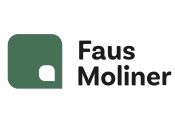The Internet can be a sales channel for dermo-cosmetics, but manufacturers may impose certain conditions
Judgement of the Supreme Court of 22 April 2016
CAPSULAS Nº 171
Selective distribution and competition
Selective distribution is an option chosen by many manufacturers to market their products. A few years ago, several companies chose this system to place their products in pharmacies; as a result, companies faced significant criticism for restricting the sale of their products to the pharmaceutical channel.
Currently, the outlook is quite different; companies that are not in a dominant position in the market can choose to organise the distribution of their products in the way that they believe most appropriate. In the dermo-cosmetics sale sector, many manufacturers have legitimately chosen to demand that points of sale meet certain conditions.
For example, the permanent presence of a pharmacist is often requested to provide consumers with bespoke advice. The point of sale featuring the entire range of products is often a requirement or conditions relating to the protection of a manufacturer’s image and reputation, with a view to defend the company’s goodwill are also a common stipulation.
Online points of sale
The judgement in question addresses how these concepts can affect e-commerce, and websites as a point of sale.
In Europe, and concerning retail pharmacies, the Judgement of 13 October 2011 on the matter of Pierre Fabre Dermo-Cosmétique set the benchmark. Encouraged by its close links to pharmaceutics, Pierre Fabre only authorised the sale of its products in physical premises with the constant presence of a pharmacist. The court deemed that this policy was excessively restrictive as it prevented all online sales, ruling that Pierre Fabre should permit online sales. Notwithstanding the foregoing, the judgement allowed the company to demand certain conditions from the websites on which its products were available.
In Spain, the Supreme Court also backed the idea that manufacturers can impose certain requirements that websites selling their products must meet, especially concerning conditions that seek to protect the prestige of the brand itself.
Thus, a brand that seeks to safeguard its image may object to its products being sold on a website that is associated to low-cost, discontinued or out-of-season products (for example, using the name “outletbelleza.com”). Brands may also object to their products being offered under conditions that are harmful to their image (for example, if on the website in question, products are essentially displayed in alphabetical order, if it is impossible to distinguish between brands, the latest products are not available or if it is not possible to return products).
